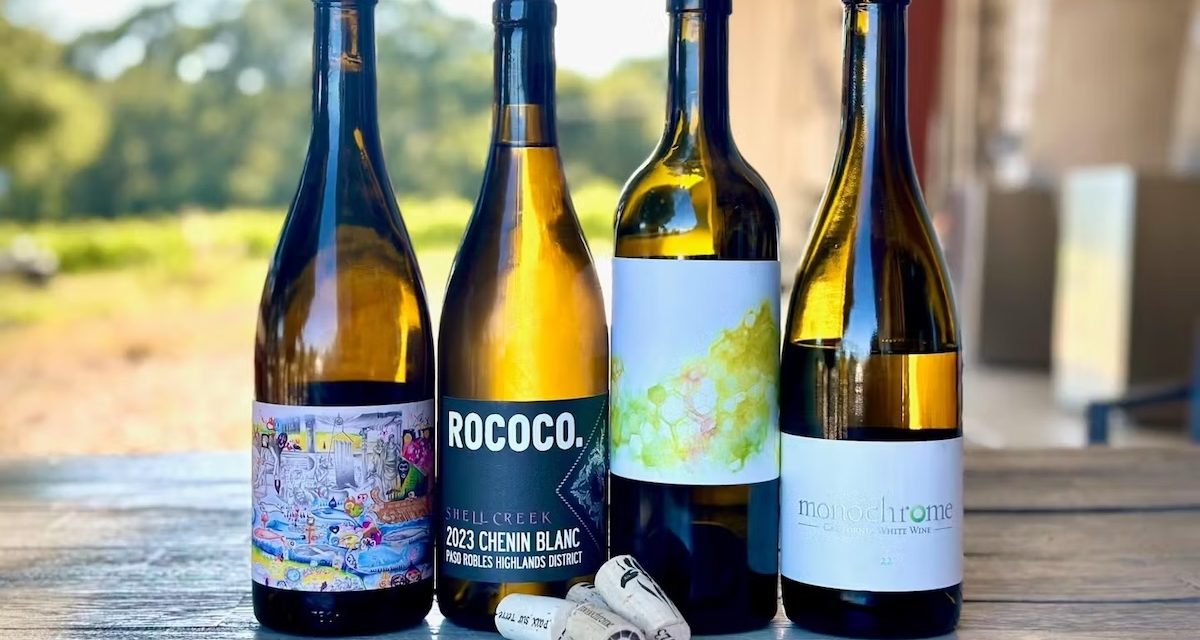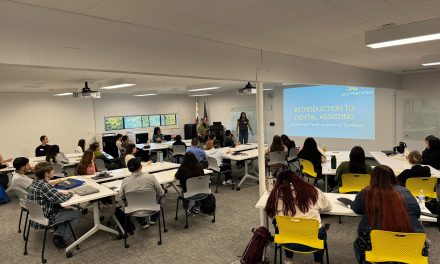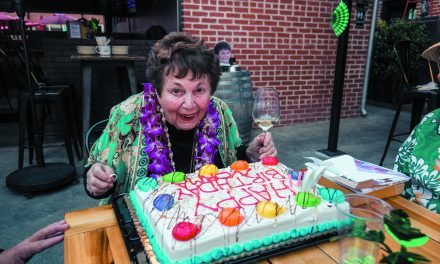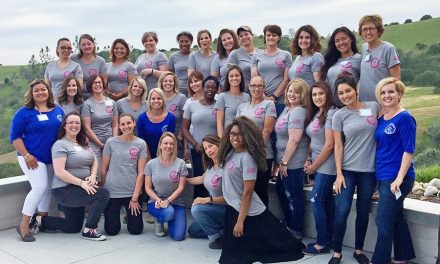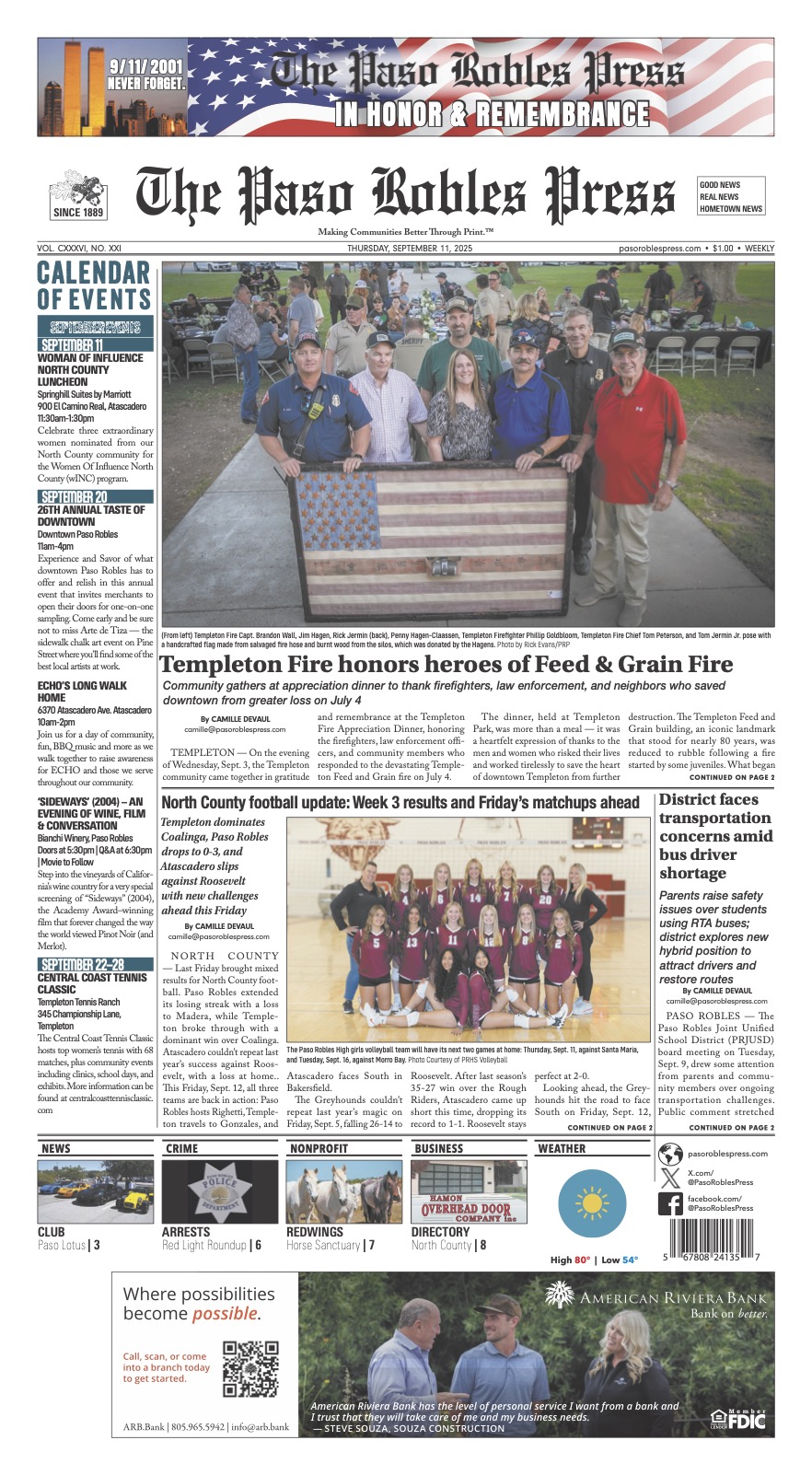There’s more to white wine than Chardonnay and Sauvignon Blanc, and Paso winemaker Dave McGee has long been carrying the flag promoting the other white wines of Paso.
McGee’s vision was realized when he along with like-minded white wine producers held the White Wine Invitational on August 8 at Brian and Natalie Brown’s Willow Creek Wine Company on Paso’s westside.
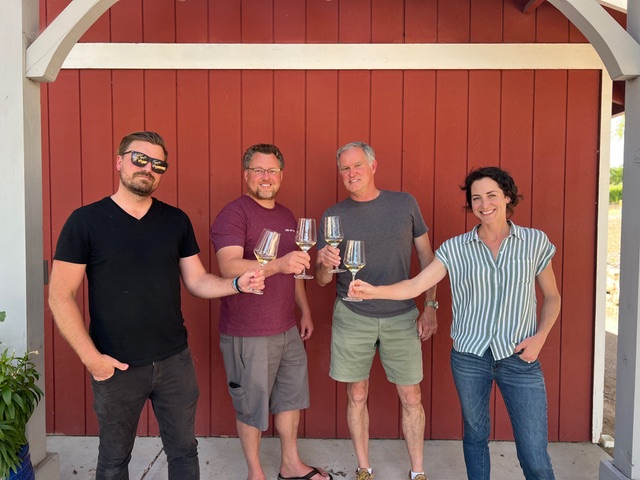
Photo: Madison Burgin
I’m an ardent white wine aficionado, but it turns out the event took place while I was traveling abroad. So I missed it, but upon my return, I caught up with McGee, founder of Monochrome wines in Tin City, and other participants.

The white wine celebration does get coverage for this column, courtesy of my husband Kirk Honeycutt who attended the event armed with his journalist’s notepad. So I got the lowdown and his notes to round off this month’s column.
An attendance of 150, exceeded the organizers’ expectations, drawing both industry and consumers. Showcasing the diversity of Paso and other Central Coast vineyards, the seven winery participants poured current vintages of untraditional varieties and eclectic blends. Participants included Monochrome, Paix Sur Terre, Union Sacré, IIWII, Rococo, Kinero and Barton Family Wines.
Paix Sur Terre owner/winemaker Ryan Pease, who is bullish on Ugni Blanc and Vermentino, presented the latter variety made in a sandstone amphora; Natalie Brown of Rococo brought her favorite white, Chenin Blanc, sourced from multiple Central Coast vineyards; and Barton Family Wines’ winemaker Brad Ely offered a blend of such obscure Italian varieties (in the US) as Falanghina and Tartufo de Greco and an orange Viognier, appropriately named, Uptown Funk.
The overall goal for the White Wine Invitational was to boost awareness of white wines coming out of Paso area, McGee told me. “For a long time, Paso has been identified as a red wine area; it got most of the attention,” he said. “White wines were an afterthought for a lot of wineries. They didn’t put the same level of attention in whites as they did in their reds.”
[Paso pioneer Gary Eberle used to joke that “we only make white wine to get out the red wine stains in clothes.” Now that his winemaker Chris Ebele has seriously upped the profile of his whites he no longer makes that joke.]
“I think there’s really good white wines being made in the last five to ten years,” McGee expressed. He also noticed that winemakers are beginning to not justmake white wine but make world-class white. “It’s high time it got to be recognized.”
McGee observed a shift in conversations with some wine critics. “They were more impressed by Paso whites than reds, which is kind of a startling statement.”
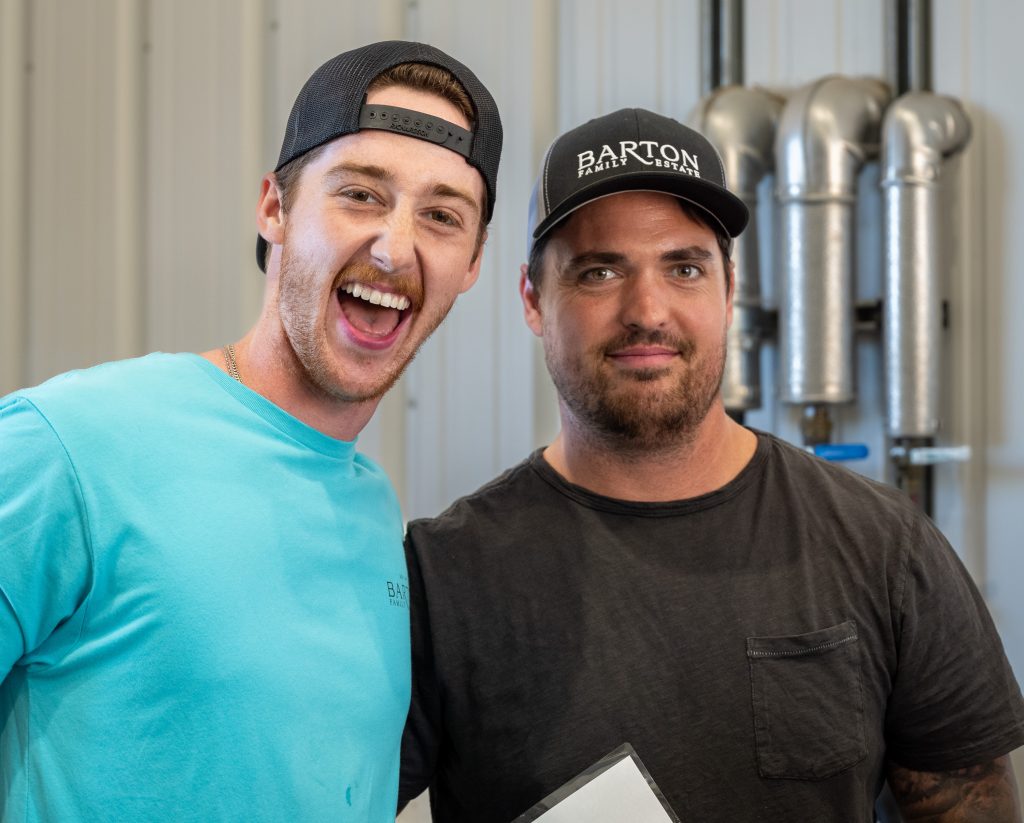
Photo: Dianne Zwick
He was further convinced of his concept of Paso’s White Wine showcase when he recently attended a major charity wine event in Los Angeles, where he witnessed a sea of Chardonnays from Napa and Sonoma. “It was one chardonnay after the next, pretty much the same style. Compare that with (white) varieties grown here and different blends.”
Then there’s the growing consumer demand for whites, according to McGee. “Whites are more versatile; they are good with lighter healthier foods and pair better with spicy foods. Women have a preference to whites than big bold reds with high alcohol at 15-16 percent.”
The consensus was the same from the event participants. Phil LaMontagne, co-owner/winemaker at IIWII — which stands for It Is What It Is — stated, “In the last two years I’ve seen more demand for white wines at every event I go to. Customers are more aware of whites.”
After collective brainstorming, McGee and his fellow winemakers devised the White Wine Initiative. The criteria were to showcase Paso’s complex whites with programs that made at least three wines in each vintages and received good scores from critics. “We wanted to keep it small initially, focused on wines with a wow factor.”
Pease concurred that organizers deliberately kept things small this year “without too much bureaucracy” to expand not only the number of wineries but possibly do events in Los Angeles, San Francisco and elsewhere.
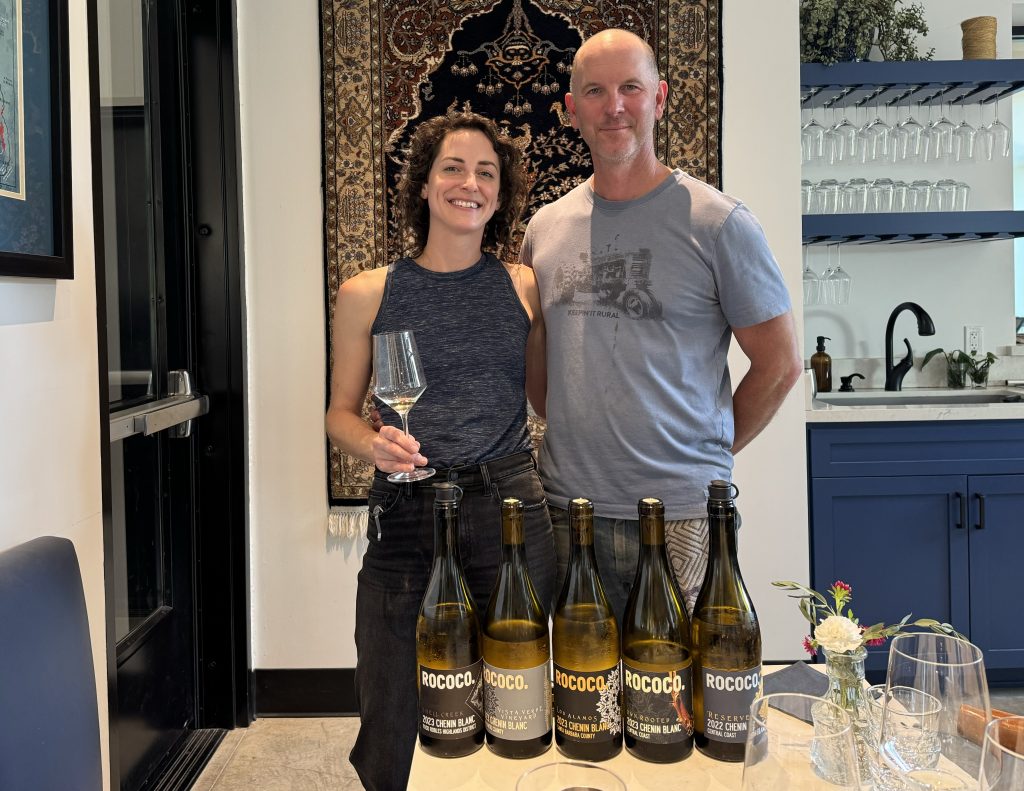
Photo: Mira Honeycutt
In a sea of Paso reds, McGee’s Monochrome brand of exclusively all-white production stands apart. As a Monochrome’s club member, I’ve sampled a variety of its eclectic blends. Such textural wines as the 2022 Blasphemy, Chardonnay joined by Chenin Blanc and Viognier, and the 2022 Playing Against Type, Sauvignon Blanc perked with a splash of Grenache Gris. The 2023 West of Tbilisi, a blend of Albariño, Picpoul and Grenache Gris, a Georgian-inspired style wine fermenting in an earthenware amphora aging on skins, stems, and seeds for nine months
McGee’s untraditional approach to winemaking ranges from blending different varieties sourced from multiple vineyards across California appellations and layering his wines using different vessels — stainless steel, oak barrels, amphora and/or concrete egg.“You’ve got to be willing to give up the concept of terroir and varietal purity. We’re trying to make interesting and complex wines that have a bit more substance to it.”
Conversely Brown is a purist regarding her favorite variety – she is on a mission to prove Chenin Blanc’s versatility. As a Californian, Brown pays homage to Chenin Blanc and its history as the fourth most popular variety planted in the 1970s. “It pulls me back to California history,” she commented.
Once a seemingly ubiquitous wine that like the Merlot of yesteryear Chenin was over-planted and poorly made; remember the jug wines of Almaden and Carlo Rossi? “Some called it “Shitty Blanc,” Brown said with amusement —Chenin all but disappeared from wine store shelves. She aims to restore the variety to its rightful place in the wine pantheon. She poured the 2023 vintages of a Shell Creek Chenin from Paso Robles’ Highland District, Vista Verde Chenin from San Benito County, Los Alamos Chenin from Santa Barbara County, plus a ’22 Reserve blend of the three.
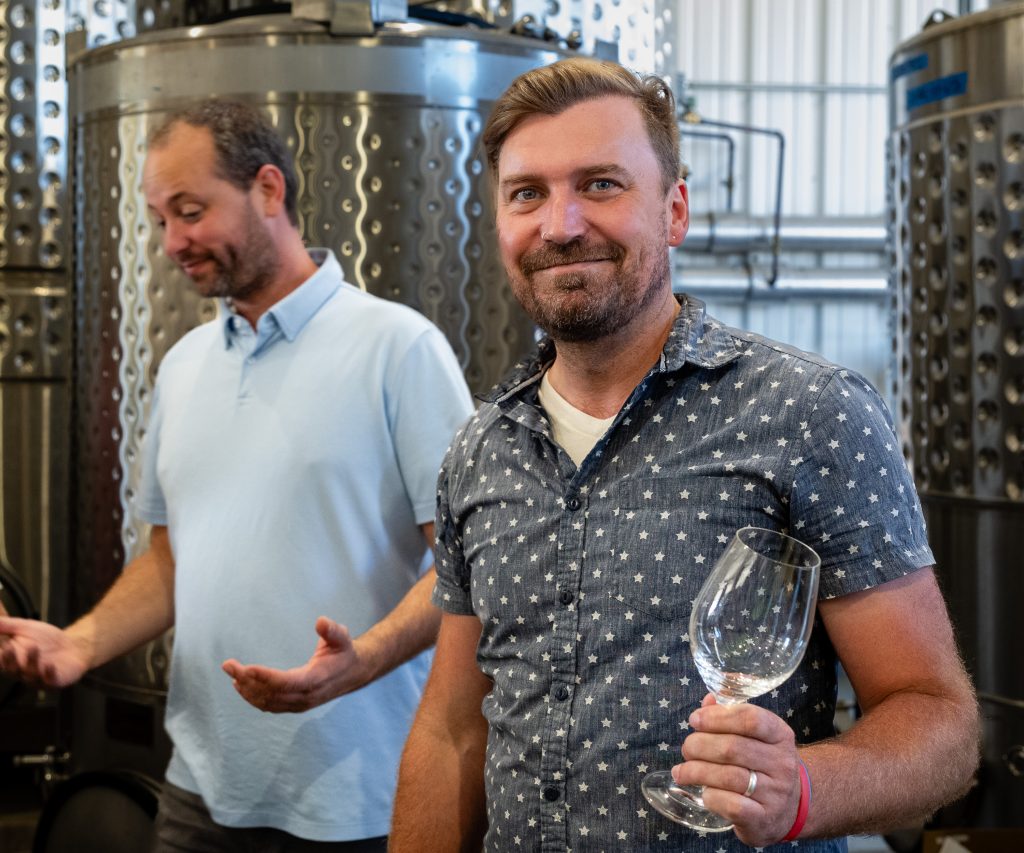
Photo: Dianne Zwick
I recently visited Brown at her Willow Creek District ranch for a tasting of four 2023 Chenins. “This is what started my relationship with Chenin,” noted Brown, pouring the the Los Alamos bottling.Although showing their individuality, all four expressed classic Chenin characteristics – minerally-driven and deliciously aromatic with melon and stone fruit.
At Tin CIty’s Union Sacré winery, winemaker Xavier Arnaudin is dedicated to grapes from Alsace, France, such as Riesling and Pinot Blanc. Pourer Harry Hall estimated that the winery’s portfolio is between 80% and 85% whites. Musing that even among these white producers Union Sacré is a bit of a “black sheep” by making wines few others do in Paso.
Other offerings included IIWII’s 2022 vintages of Picpoul Blanc and Among the Wildflowers, a blend of Picpoul, Vermentino, Roussanne and Grenache Blanc. Another rollicking blend came from Kinero, the 2022 Old iine In Vain, Sauvignon Blanc joined by Chenin Blanc, Chardonnay and Viognier, crafted by Anthony Yount, a winemaker at Denner and RIISE.
With the success of their debut event, the band of white wine warriors are exploring different opportunities for the future. “To spread the message geographically to a wider audience in different parts of the state and country,” McGee said confidently.
Some winemakers in attendance were eager to sign up for next year’s event. Manoli Boutzoukas of Boutz Cellars was ready to bring his Greek varieties planted in the Adelaida District, which would fit right in with Alsatian-style wines and rediscovered Chenin Blancs.
PASO ROBLES PRESS MAGAZINE
Copies of Paso Robles Press Magazine are directly delivered to 23,000 readers in zip codes 93446, 93451, and 93465 and 2,000 dropped with support from advertisers and subscribers. Together, we are Making Communities Better Through Print.™
To subscribe or advertise, click here.

